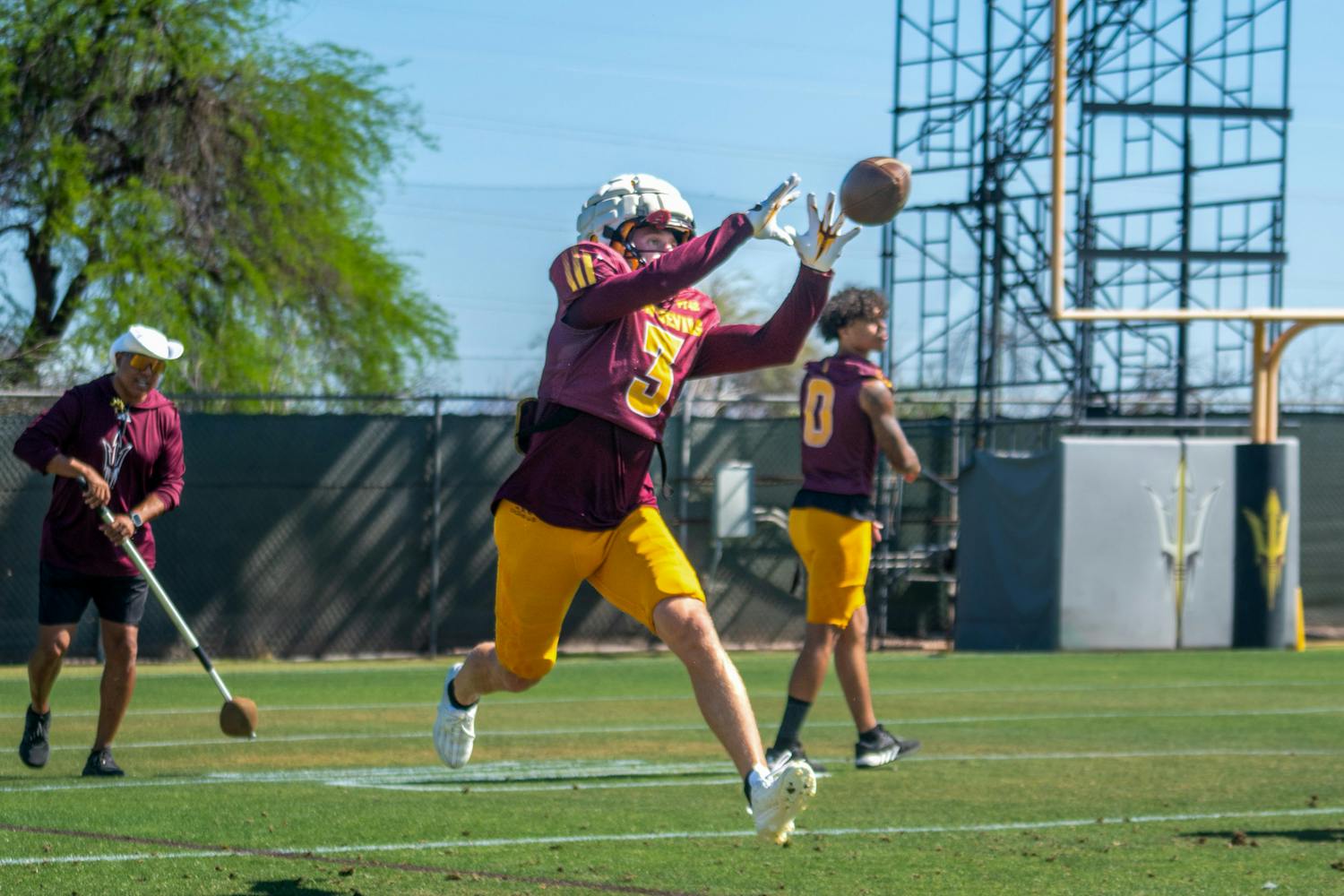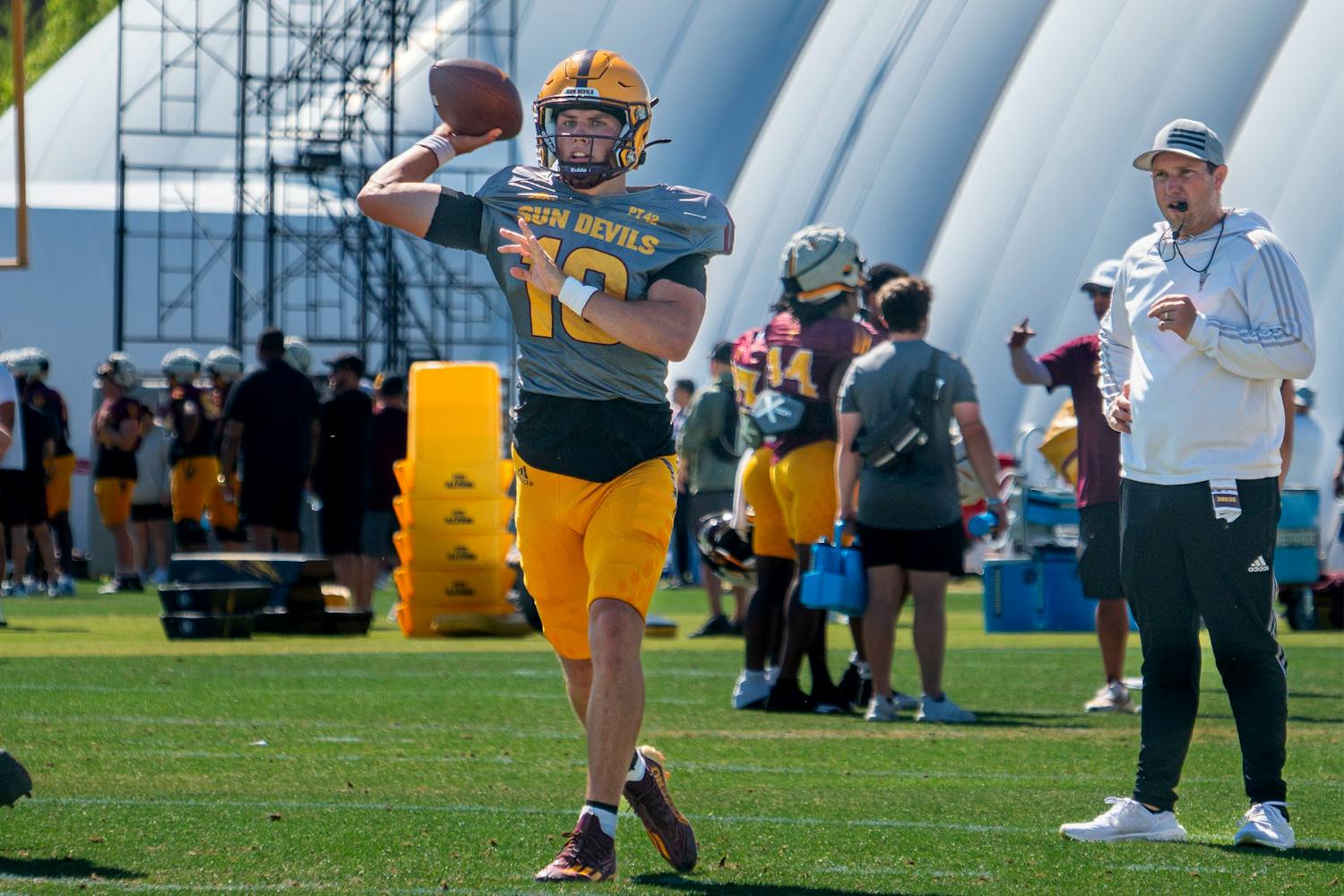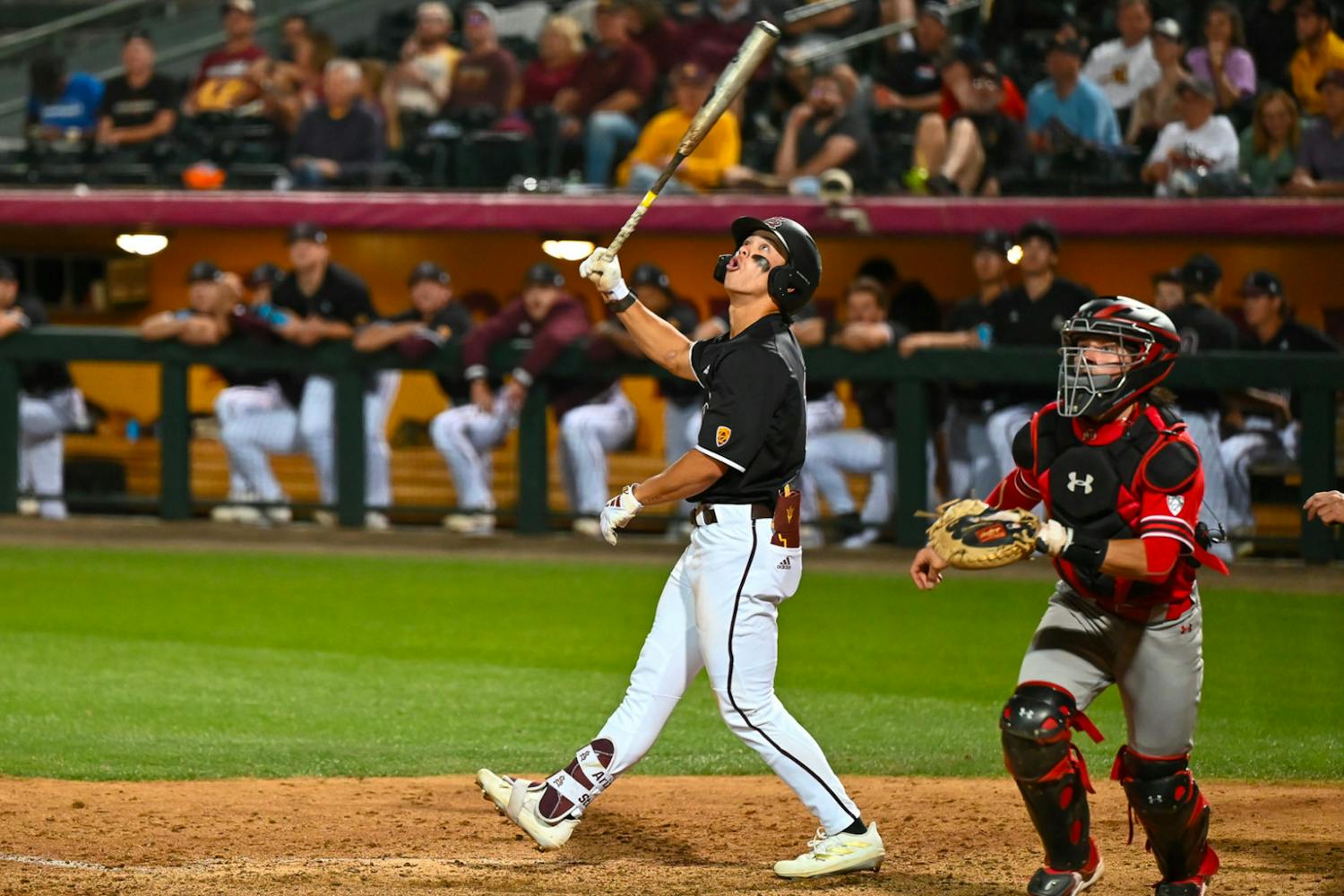 ASU senior Shaquielle McKissic shoots a free throw against USC in the Pac-12 tournament on Wednesday, March 11, 2015, in Las Vegas. The Trojans came from behind to eliminate ASU. (Photo courtesy of ASU)
ASU senior Shaquielle McKissic shoots a free throw against USC in the Pac-12 tournament on Wednesday, March 11, 2015, in Las Vegas. The Trojans came from behind to eliminate ASU. (Photo courtesy of ASU)Pac-12 commissioner Larry Scott met with the media on Friday before the semifinal round of the Pac-12 tournament. A transcript of what he said can be found here.
Some takeaways:
Pac-12 tournament staying in Las Vegas but site could move down the street
Scott announced on Friday a one-year extension for the Pac-12 tournament at MGM Grand Garden Arena.
But it might be at the hotel for just one more year because the MGM–AEG arena will be ready for the 2016-17 season.
The 20,000-seat, multipurpose event center broke ground on May 1, 2014, and is scheduled to open on April 30, 2016, per the official site.
The new arena will be located just west of the Las Vegas strip, between New York-New York and I-15, less than a mile away from MGM Grand Garden Arena.
Down the line, Scott will have a decision to make – which arena to use. The MGM Grand Garden Arena is located within a hotel, which creates a week-long buzz about the tournament.
"We're very mindful of that," Scott said. The overall fan experience. And so there's a lot to understand in terms of how the new arena will work and the dynamics with the hotel and the overall fan experience."
Expect more awkward game times
The Pac-12’s basketball scheduling in the 2014-15 season irked fans.
The games started too late. Or too early.
ASU for example played four games that started at 9 p.m. Arizona time or later. The Pac-12 championship game will begin at 11:05 p.m. ET. Road trips became Wednesday/Sunday splits. Don’t expect those awkward schedules to change, as these are the result of increased national television coverage.
“You realize there's some pressure on fans and the fan experience and attendance," Scott said. "By the same token, there's been a tremendous, tremendous benefit for our programs in terms of the national exposure that they've been able to receive, especially – and I don't want to understate this – getting on to the ESPN platform."
The Pac-12 completely owns its own network, unlike rival conferences. But with the Pac-12 Network showing more games each year, the pressure will only increase to put them in more time slots. And for the national games, they are still subject to ESPN and Fox’s availability. It makes sense for those networks to show late games from the only major conference in the Mountain or Pacific time zones.
“There is not a lot of flexibility around, if we're going to keep getting the exposure we're getting,” Scott said.
Scott supports exploring freshman ineligibility
Back in May, the Pac-12 university presidents released a joint letter outlining principles for reform. Among them: If the NBA doesn’t raise age limits for players, then restore freshman ineligibility in men’s basketball.
While Scott hasn’t said he supports the drastic change, he wants to explore it and have the conversation.
Since the 2006 NBA draft, players had to be 19 years old and one year out of high school before being eligible. Previously, players straight out of high school could be drafted. But now a handful of the top high school players turn professional after one season in college, a phenomena known as one-and-done.
During that one season, critics argue one-and-done players brush off academics, outside of trying to remain eligible. Scott thinks reviving freshman ineligibility, which could incentivize these top players to just skip college altogether to play professionally overseas, would benefit players academically.
Related: Reframing the 'freshman eligibility' debate
“Freshmen ineligibility would be a very dramatic way to make the statement that the expectation is that students be integrated in school; they be going to class; they be staying eligible and have a chance to get their sea legs under them as students before they're kind of thrown into the competitive caldron of intercollegiate athletics and have to deal with those additional pressures as well,” Scott said.
But is making a move intended as a response to a few players beneficial for the thousands who play Division I men’s basketball?
Reach the sports editor atjmjanss1@asu.eduor follow@jjanssen11on Twitter.
LikeState Press Sportson Facebook and follow@statepresssporton Twitter.



